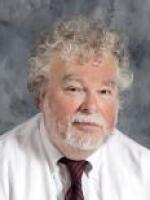Over recent decades, large-scale commercial wind generators have become larger and larger, as the call for that renewable energy has risen. It has also demonstrated the limitations of the engineering — with factors of height, weight, and sound all playing a role in how they operate and how much they are accepted.
But now, Atrevida Science, a spin-off from the University at Buffalo's engineering school, is looking at ways to make the windmill blades themselves even more high-tech, adapting to shifting winds and concerns from siting opponents.

"What we're doing is through our modeling and simulation, we are developing designs that allow the blade to change its profile in real time, based on the changing wind condition,'" said Atrevida Science CEO Claudia Maldonado.
"And so, what that allows you to do is make that blade longer, but you're reducing those loads that cause damage and. therefore, you're harnessing more energy but not at the expense of creating more maintenance issues," she said.
The work will also address height and weight issues, with some towers now ranging beyond 300 feet in height and moving out into open lake and ocean waters to get more wind and, perhaps, move the sound they produce away from homes and pastures.
The assembly of blades can weigh up to 60 tons. That may seem like a lot, but the nacelle, which holds the actual generator high up on the tower, can weigh far more.
"The nacelle is what the rotor is mounted to and within that nacelle, you may have a gear box. You're going to have a generator and what's in that assembly can weigh up to a couple hundred tons itself. So, they have these very large massive generators, up there," said UB Assistant Professor of Mechanical and Aerospace Engineering John Hall.
He adds that there are massive weights involved, producing inertia. There is vast engineering involved to produce more energy in the process while creating lighter generators which can handle the wear of spinning in what might be 100-miles an hour wind.
The company says early research on what's called morphing — a way to flex individual smart blades — can increase the produced power by 14 percent.
Hall said there is major work underway on making the generators lighter and more efficient.
Shorter towers also have an economic benefit to the economy. There are serious maintenance issues because workers may have to climb 300-foot towers to reach that nacelle to make repairs.
Maldonado said that's creating the need for specially trained repair people.
"Fastest growing job is a wind turbine technician. It is a good-paying job. It is a high-skilled job. And, there's going to be a lot of them. It's already one of the fastest growing, if not the fastest growing job, right now," Maldanodo said.
That's on top of the doctorate-level engineers like Hall and the grad students in his research group. The UB spinoff still has access to the mammoth computer capability at the university, with Hall saying wind turbine design is data-driven and needs vast computer use. And student engineers who are engaged in making a difference.
"They have a concern for the future. They're interested in not just learning from an educational perspective but I think they also have an interest in it, as well. They're interested in climate change. They're interested in renewable energy. As a professor, I have students that come to me with these issues and they want to see how they can help." Hall said.
Hall said there are real issues around vibration which Atrevida will be working on.
"If the wind farm is noisy, say, on a particular day when the wind is blowing a certain way and maybe folks are complaining about it. What they might do is draw back the power a little bit, so it's not quite as loud. There's ways around that, with good blade design and this is another area that we are focusing on, is how we can design and operate the system so that we don't have to give up much power production whenever these issues happen and we quiet the system down," he said.


